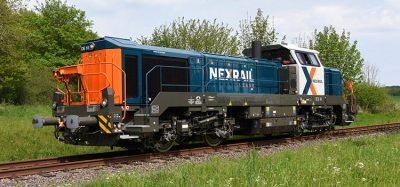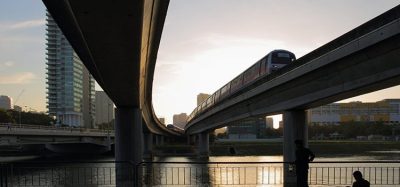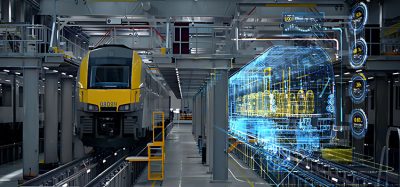HS2 announce carbon cutting milestone
Posted: 12 May 2023 | Elliot Robinson (Editorial Assistant - Global Railway Review) | No comments yet
HS2 have moved over 10 million tonnes of material by rail, reaching a milestone in HS2’s plan to cut carbon emissions by removing lorries from roads.
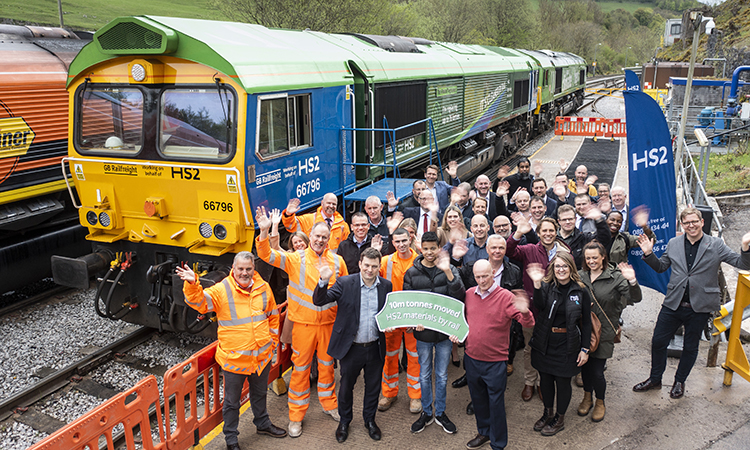

Celebrating HS2's 10 million tonnes of aggregate by rail milestone in Buxton - Credit: HS2
HS2 has announced that 10 million tonnes of material have been delivered to – and removed from – construction sites by rail, a major milestone in HS2’s plan to cut carbon emissions by removing lorries from roads.
When HS2 launched its ‘Materials by Rail’ programme in 2020, the target by 2030 was to haul 10 million tonnes of aggregate to and from sites, taking up to 1.5 million lorries off the roads using up to 15,000 freight trains.
Working strategically with joint venture partners, Network Rail, freight operators and building materials companies, HS2 has already moved over 10 million tonnes of materials by rail in just over two years. It is now expected that HS2 will move 20 million tonnes of aggregate across the Phase One programme, removing three million lorries from the strategic road network on 30,000 freight trains.
“Our ‘Materials by Rail’ strategy plays a vital role in our objective to cut carbon right across the project, and we’re working hard with our joint venture companies, Network Rail, freight operators and aggregate suppliers to make deliveries by rail where possible,” David Speight, Delivery Director for Main Works Civils Phase One at HS2 Ltd, said. “In addition to cutting carbon emissions, HS2’s ‘Materials by Rail’ strategy is creating jobs and skills opportunities right across the country, along with minimising impacts to communities along the line of route.”
“It’s a huge sustainability milestone, and one which has been achieved together,” Aiden Theyer, Operations Management Apprentice for Tarmac, said. “The overall project is a true reflection of how collaborative working with the site and industry can accomplish great things. If you had told me at the start of my apprenticeship that I’d be playing a part in the delivery of not only a regional but national infrastructure project of this size and impact, I’m not sure I’d have believed you! It’s a great feeling and I’m so pleased to have had the opportunity to pursue a career within construction. It really is an exciting industry to work in.”
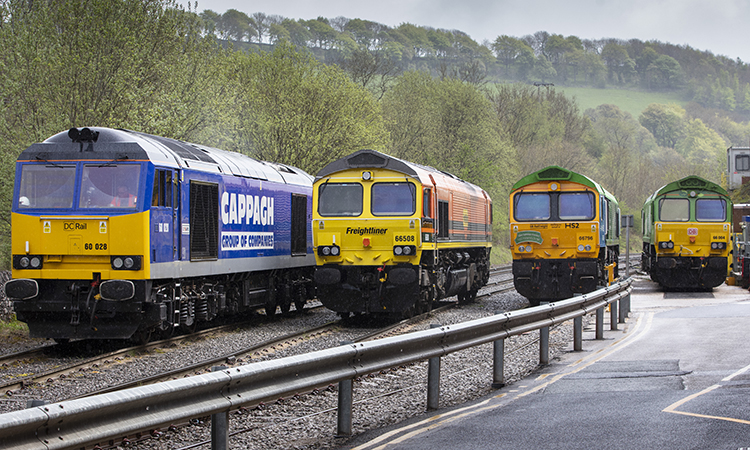

The four locos of freight operating companies (FOCs) – Credit: HS2
HS2 has been working with Network Rail for a number of years to ensure that capacity on the rail network is available for HS2’s contractors to deliver their requirements by rail rather than road.
“We’re delighted to mark this significant milestone for HS2’s ‘Materials by Rail’ programme which is taking polluting lorries off our congested roads to transport aggregate across the country in a fast, reliable and environmentally friendly way,” Chris Bennett-Poynter, Regional Freight Manager – North West and Central Region at Network Rail, said. “Reducing carbon emissions is a key priority for Network Rail and we will continue to work closely with HS2 and our industry partners to maximise further transportation of construction materials by rail.”
All HS2’s main works contractors have contributed to the materials by rail milestone – Align (a joint venture formed of Bouygues Travaux Publics, Sir Robert McAlpine, and VolkerFitzpatrick), BBV (Balfour Beatty VINCI), BBVS (Balfour Beatty VINCI SYSTRA), EKFB (a team made up of Eiffage, Kier, Ferrovial and Bam Nuttall) and Skanska Costain STRABAG.
Along with freight operators and aggregate companies, UK businesses are already benefitting from contracts on HS2. There are now nearly 30,000 jobs supported by the programme and around 2,500 British-based businesses have delivered work on HS2 so far.
Once HS2 opens and moves long-distance, inter-city passenger services on to dedicated high-speed lines, the new railway will free up space for even more freight services across the country, as well as additional local and regional passenger trains.
Related content you will enjoy:
HS2 delivers £1.7bn boost to West Midlands businesses, report reveals
Images: HS2 celebrate milestone TBM breakthrough in Warwickshire
Related topics
Related organisations
Align JV, Balfour Beatty VINCI (BBV), Balfour Beatty Vinci Systra (BBVS) JV, EKFB JV, HS2 Ltd (High Speed Two), Network Rail, Skanska Constrain STRABAG JV



